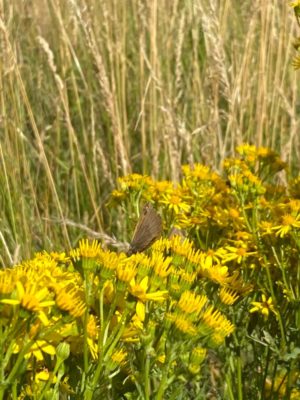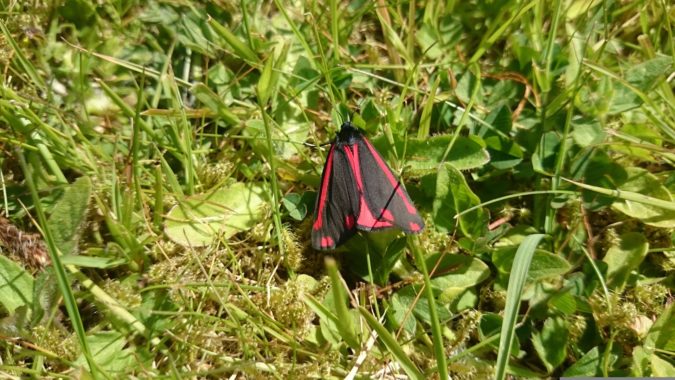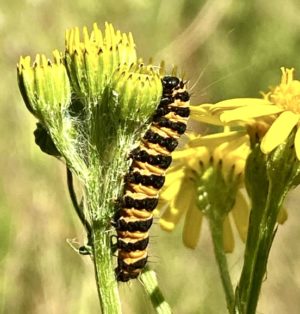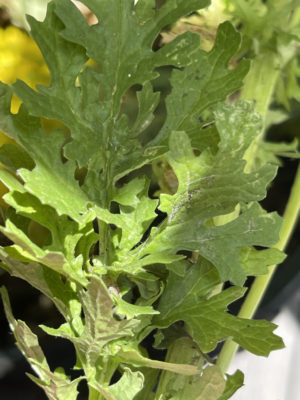The ragwort.

Ragwort is a common wild flower. Its common names include, common ragwort, stinking willie and tansy ragwort (though its resemblance to true tansy is rather superficial). It is not particularly a woodland plant, it is found in dry, open places - on waste land, waysides and (grazing) pastures. It is not a plant favoured by land owners because it has toxic effects on cattle and horses. It is generally considered to be a biennial, but can persist for some years.
The stems are erect, straight, basically hairless. The actual plant may grow to a height of two metres. The leaves are lobed in a ‘pinnate’ fashion and have a distinctive smell that has lead to some of its common names - such as stinking willie.
 The ragwort is a member of the daisy family (Compositae, now the Asteraceae), and its flowers are massed together into dense, flat topped clusters. Each ‘flower’ is made up of many small, individual florets. In the centre are the disc florets whilst around the edge are the ray florets. The latter have a large lip or flap, which serves to increase the visibility of the plant to pollinators. During the flowering season, a plant may produce many thousands of seeds. The seeds have hairs attached to them, which help in dispersal.
The ragwort is a member of the daisy family (Compositae, now the Asteraceae), and its flowers are massed together into dense, flat topped clusters. Each ‘flower’ is made up of many small, individual florets. In the centre are the disc florets whilst around the edge are the ray florets. The latter have a large lip or flap, which serves to increase the visibility of the plant to pollinators. During the flowering season, a plant may produce many thousands of seeds. The seeds have hairs attached to them, which help in dispersal.
Ragwort is a plant that is much loved by pollinators - bees, flies, moths and butterflies. It is generous in its nectar production, and has been placed in the top ten of nectar producers by one survey. The plant also provides home and / or a food source for many invertebrate species, some of which feed on ragwort exclusively*, including some species on the IUCN RED LIST. One species that is reliant of this plant is the cinnabar moth, whose status is described as ‘common and widespread, but rapidly declining”. Interestingly, the cinnabar moth feeds on the plant absorbing the alkaloids and these make it distasteful to its predators .
However, important as the plant is in ecological terms, it is toxic as it contains a number of alkaloids. These are poisonous to various animals, such as horses and cattle. The bitter taste is a ‘disincentive’ to much of the plant being eaten. However, because of the alkaloids, it is one of the five plants (in the UK) named as ‘an injurious weed’ [as defined by the Weeds Act of 1959]. Some people may suffer an allergic reaction after handling the plant, experiencing a form of dermatitis.

Cinnabar moth, image courtesy of mcbeaner on Pixabay.

Cinnabar caterpillar

Leaves of Ragwort
Comments are closed for this post.
Discussion
Jemma, note the red stripe…it’s a Cinnabar moth – see https://butterfly-conservation.org/moths/cinnabar for pictures of Cinnabar and similar species.
Spot on, mea culpa.
Replaced.
Hi, I’m not an expert but the picture you’ve provided of the adult moth looks like one of the burnet moths (the 6 spot burnet I think) not a cinnabar moth.
In terms of habitat, I’ve seen quite a lot of ragwort in coppiced woodlands, in the years immediately after cutting the coppice coupe when the ground flora springs up (i.e. whilst there’s still lots of light). I also sometimes see it in really open woodlands (not just in the rides, but in between widely spaced trees). So whilst it’s not a plant of dense or semi-dense woodland, I do wonder if it would have been more frequent in “wooded” landscapes in the days when more woodland was coppiced, and in the perhaps more open woodland of the long distant past. Always fascinating to ponder where our “open space” flora would have grown back in the mesolithic and earlier, when humans hadn’t created such extensive open landscapes…

I have changed the image – see note below
Blogs
15 September, 2022